The suspension bridge that connects Michigan’s peninsulas had been discussed as early as 1884, including by noted industrialist Cornelius Vanderbilt who wanted a means of ferrying guests to his newly built hotel. In 1923 the state legislature ordered its highway department to make a study of the bridge’s feasibility and the Mackinac Straits Bridge Authority was born. In 1953 the authority finally attracted sufficient funding to build the bridge, and construction officially commenced on May 7 and 8, 1954 at St Ignace and Mackinaw City, respectively.
Interesting Facts about Mackinac Bridge
1. The five-mile bridge, and its approaches, was designed by engineer Dr. David B Steinman and was at the time the world’s longest suspension bridge that featured cable anchorages. The contract to build the foundations cost over $25 million dollars at the time and resulted in the largest construction fleet for a bridge that had ever been assembled.
2. The United States Steel Corporation’s American Bridge Division was awarded the contract to build the superstructure for a cost of over $44 million and began milling the various parts of the bridge, such as plates, wire, bars and cables for the superstructure, as well as the caissons and cofferdams necessary to build the foundations.
3. Remarkably, considering the hazards of construction over the turbulent straits, the bridge was opened on schedule, on the 1st of November, 1957. The bonds used to construct the bridge were retired on July 1, 1986, and fare revenues now fund the maintenance and operation of the bridge.
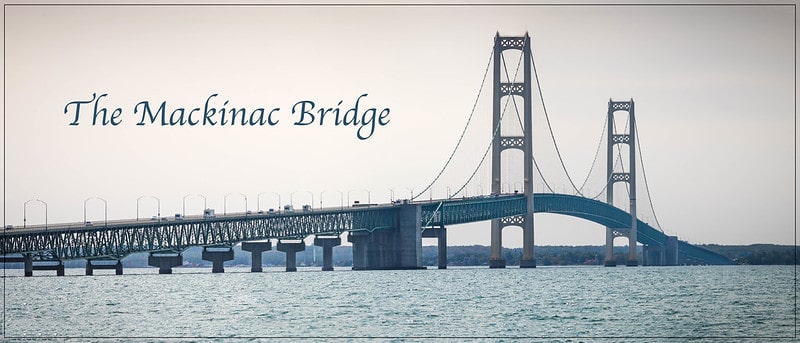
4. When it was completed, the Mackinac Bridge was the longest suspension bridge in the world, today it is the 5th longest. Its main span is the 19th longest in the world. It remains the longest suspension bridge in the western hemisphere. The total length of the bridge is over five miles or over 26,300 feet. Its main towers are 552 feet high, measured from water level, and the roadway is 99 feet above the water at the middle of the span between them. In 1998, the Akashi Kaikyo Bridge in Japan became the longest with a total suspension of 12,826 feet.
5. The main cables that are used to suspend the roadway are constructed from over 42,000 miles of wire and collectively weigh 11,840 tonnes. The total weight of the bridge is just over 1.024 million tonnes including 931,000 tonnes of concrete.
6. Over four thousand engineering drawings were created for the bridge’s design by over 350 engineers as well as over 85,000 blueprints that were used during construction. Over 3,500 workers were employed on the actual bridge site, with 7,500 additional workers employed at quarries, mills, and other businesses that provided materials for its construction.
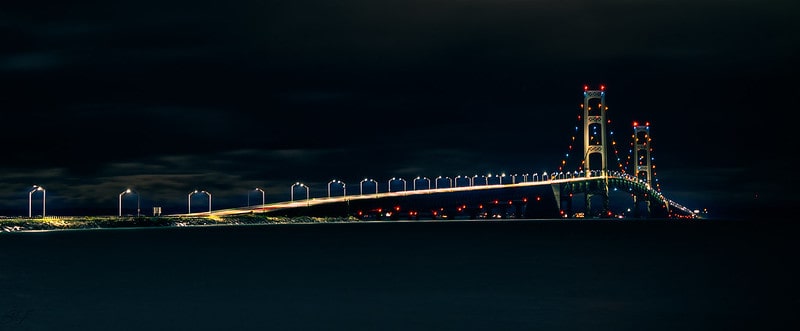
7. Sadly, tragedies occurred during construction with five men losing their lives: one in a diving accident, a man fell into a caisson that he was welding, a man fell into the water and two men also fell from a temporary catwalk. In addition, in 1997 a bridge painter fell from a painting platform and drowned.
8. The length of the main span of the bridge is 3,800 feet. The bridge supports a roadway that is 54 feet wide and includes two outside lanes that are 12 feet wide and two inside lanes that are 11 feet wide and that have a center mall separating the four lanes that is two feet wide. The curb, catwalk and rails on each side are 3 feet wide.
9. A total of 609,916 vehicles crossed the bridge during July in 2017 which was the highest number in a single month in the last 3 years. Over 4 million vehicles crossed the bridge in 2016. The 100 millionth crossing occurred 20 years ago on July 25, 1998. The 50 millionth crossing took place Sept. 25, 1984.
10. Mackinac Bridge was listed number 64 in a list of the top 100 US travel destinations that have appeared on Instagram, according to a 2017 ranking by a European travel site called TravelBird.
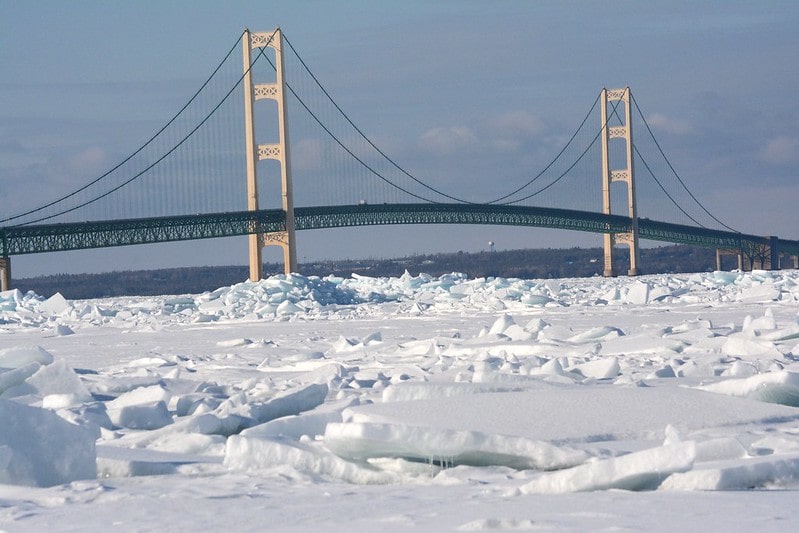
11. In 2017, Michigan residents that are also fans of the bridge were able to buy grated metal pieces that were cut away and replaced from the original Mackinac Bridge from an online auction as a historical souvenir.
12. Falling ice from cables and towers has caused temporary bridge closures. Snow blowing across the bridge and high winds have also forced temporary closures.
13. The distinctive colors the bridge is painted in were accidentally chosen by an advertising agency. The agency featured the bridge in an advertisement, and (since colors had not been decided at the time) chose ivory for the towers and foliage green for the trusses. The Bridge Authority saw the advertisement and kept the color scheme.
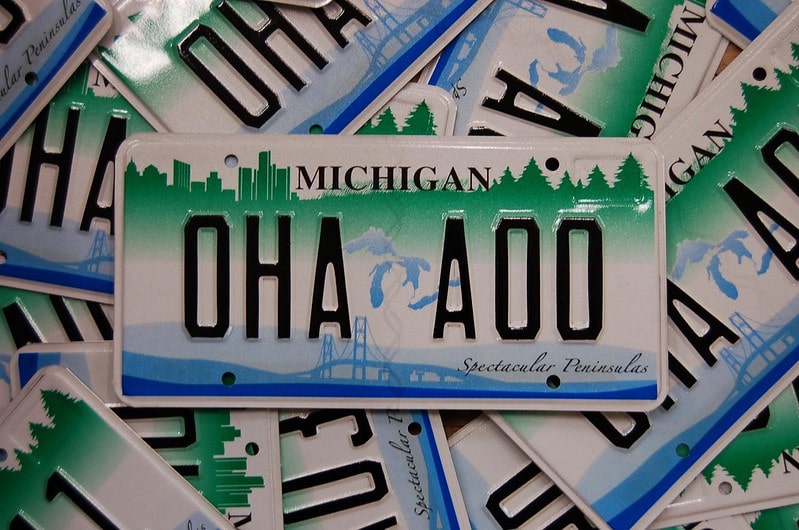
14. The bridge is shown on Michigan license plates.
15. Suspension bridges are designed to move with changes in wind, temperature, and weight. The deck at the center span of the Mackinac Bridge can moves as much as 35 feet (east or west) during high winds while supporting a maximum of 38,486 tons.
16. There is a walk associated with the bridge. The Mackinac Bridge Walk occurred for the first time in 1958 during its dedication ceremony and was led by Governor G. Mennen Williams. On Labor Day, 1959, participants in the walk decided to alternate between north and south over consecutive years. The north-to-south route became the dedicated route in 1964.
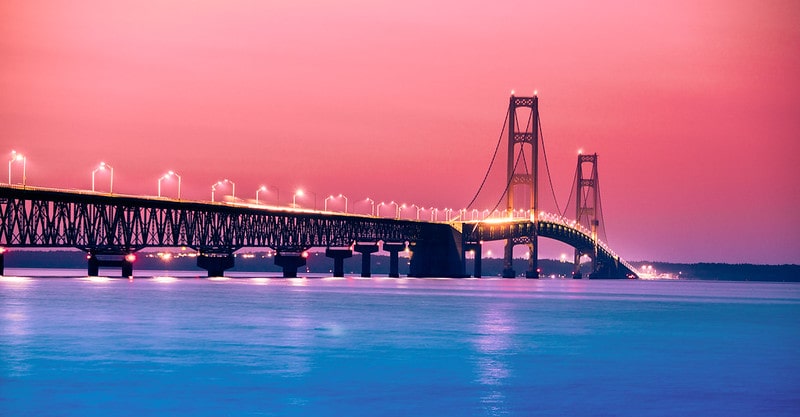
17. A record number of walkers participated in 1992 (over 85,000) when President George H.W. Bush took part. In the last 60 years, it is estimated that the total number of people that have walked over the bridge exceeds 2 million.
18. Elevators are built into the towers that take workers to the top for maintenance purposes. Each year a raffle is held to provide a chance for others to have this once-in-a-lifetime experience.
19. In August each year, the Mackinac Bridge Authority holds a raffle draw where it chooses 25 non-profits to receive a certificate which is auctioned or raffled for charity purposes, that allows a trip in the tower. The certificates are for two people and can be used between May 1 and October 15th of the following year.
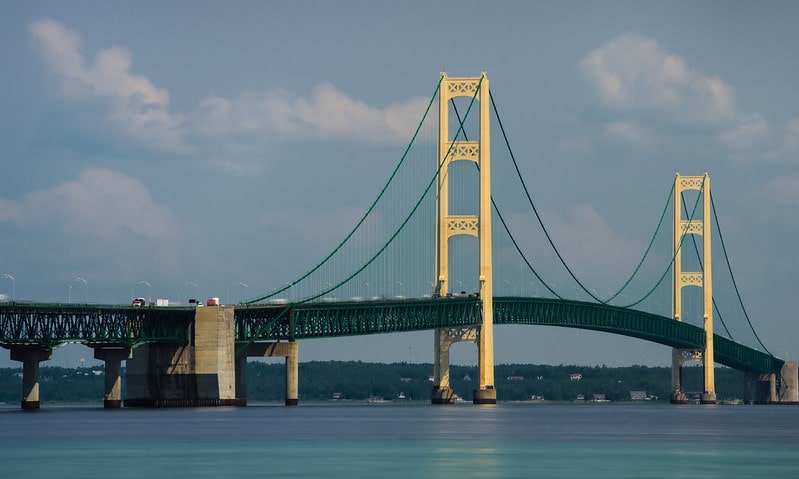
20. The very first private car to cross the Mackinac Bridge was a 1951 Chevrolet Styleline De Luxe station wagon that was driven by one Al Carter from Chicago. The vehicle was acquired and is now on permanent display at the Grand Rapids Public Museum.
21. The Mackinac Bridge Authority has an assistance program available for people that are afraid or uncomfortable crossing the bridge. It operates 24/7/365 and is available for all types of vehicles and offers drivers to drive the vehicle for their owners.
22. A major refurbishment of the bridge occurred in 2017. Costing $6.3-million, the 21-month long program repainted the bridge’s towers with zinc-based paint. It was the first time the towers had been stripped to bare metal and repainted since the bridge’s construction and was necessary to remove the lead-based paint that was used then.
23. During summer, the Upper Peninsula and the Mackinac Bridge have become a major tourist attraction. As well as drawing visitors from Mackinac Island, the bridge attracts interest from a wide range of tourists including bird-watchers, bridge enthusiasts and photographers.

24. In 1958, to coincide with the opening of the bridge, the US Postal Service released a 3¢ commemorative stamp featuring the recently completed bridge. In 2010 the Postal Service honored the Mackinac Bridge once more on its priority mail $4.90 stamp.
25. Known as ‘Big Mac’ or the ‘Mighty Mac’ by Michiganders, the Mackinac Bridge was the subject of a feature-length documentary produced by filmmaker Mark Howell in 1997 that was titled, aptly enough, ‘Building the Mighty Mac’.
Mackinac Bridge – quick facts and statistics
| Name | Mackinac Bridge |
|---|---|
| Design | Suspension Bridge |
| Clearance below | 155 feet (47 m) |
| Designer | David B. Steinman |
| Toll | $2.00 per axle for passenger vehicles ($4.00 per car). $5.00 per axle for motor homes, and commercial vehicles |
| Carries | 4 lanes of I-75 / GLCT |
| Table last updated | 25 January 2021 |
